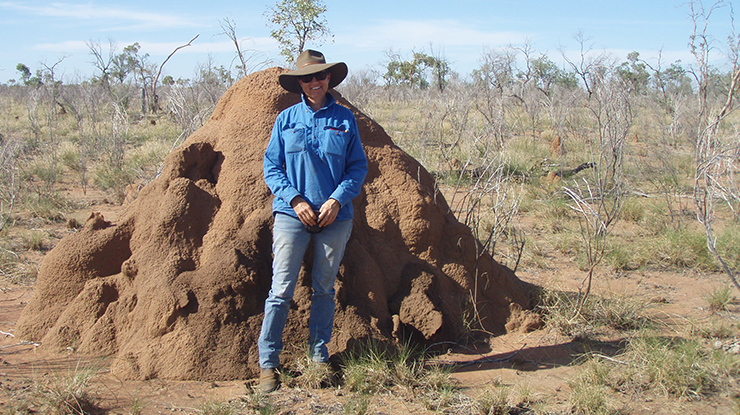 Queensland producer Nina House is no stranger to climate extremes. Here, she shares her top tips for meeting them head-on.
Queensland producer Nina House is no stranger to climate extremes. Here, she shares her top tips for meeting them head-on.
Building a business which can adapt to climate extremes is a guiding principle for Nina House.
Nina runs a breeding enterprise with her parents Ashley and Margaret in Queensland's Desert Uplands bioregion.
The family has worked in the challenging environment, with its spinifex, open eucalyptus country and ancient, low-phosphorus soils since the early 1980s.
Land management has evolved with regionally focused research and new farming practices, but the climate remains a challenge for producers.
"We've always had drought – generally, every decade there's a seriously dry year, followed by a couple of average years, then maybe one good wet year," Nina said.
The family has adapted to the conditions by developing the property, increasing watering points, improving pastures and using strategies such as early weaning and targeted supplementary feeding.
In particular, strategic grazing has paved the way for a resilient business.
The family completed a RCS GrazingforProfit™ course, which was a catalyst for other changes in management such as implementing rotational grazing and wet season spelling.
"In the 30-odd years we've been here, we've only had to completely destock once due to drought."
Hands-on research
Through her role as chair of the Western Queensland Regional Beef Research Committee, Nina was invited to join a producer reference group for the Bureau of Meteorology (BOM) Forewarned is Forearmed project, managed by MLA.
Along with other producers, she's assessing the usability of a range of BOM forecasting tools under development.
"The tools being developed could potentially have significant effects on producers' management decisions," Nina said.
"If we know up to three months in advance what temperatures could be and what rain could fall, we can plan ahead if mustering needs to be done sooner before it gets too hot, or if we sell cattle now because there is no rain coming.
"There are limited resources to undertake research, so it needs to be relevant, easy to implement and improve profitability.
"The group who knows this best is the end users: the producers."
Well-stocked toolbox
When the BOM products are released publicly, they'll form part of Nina's carefully selected business toolbox.
She uses technologies such as Google Earth for infrastructure planning and recently invested in a new Gallagher TSi2 weighing system. The family is keen to automate further, but any new system must demonstrate a business benefit.
"Because we have such a variable climate, we have to be smart in how we spend our money.
"We've identified that we need to improve animal production – in the current season this means ensuring adequate feed and water, so this is our focus for the moment."
Nina's top tips for managing a variable climate
|






